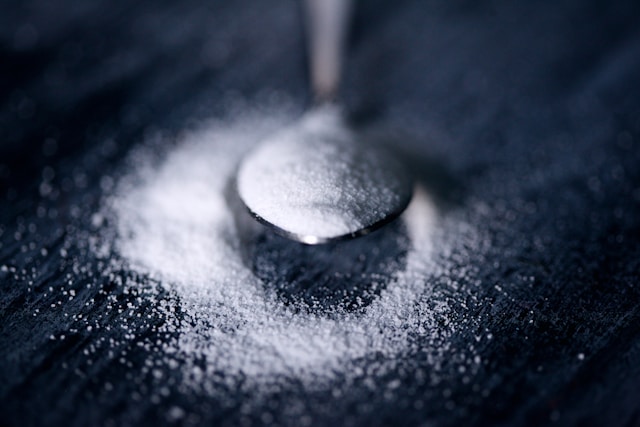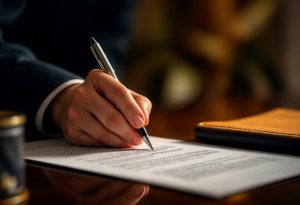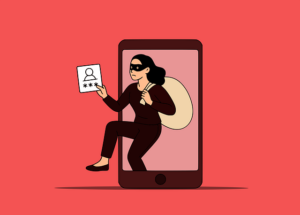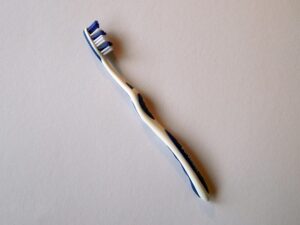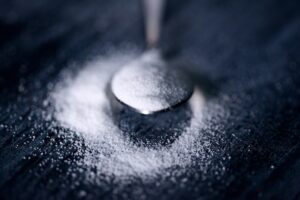
Lab tests are commonly ordered by doctors in order to test for certain diseases and conditions. Some of these tests require that the patient fasts for 8-12 hours prior to getting their blood drawn. The glucose test is arguably the most common of these fasting lab tests, since the goal is to prevent a spike in serum glucose levels after a meal, rendering any results virtually useless. So, you may be wondering to yourself, what can you eat or drink before a glucose test? Read on below for some ideas that may surprise you.
The Importance Of The Glycemic Index
The glycemic index is a scale that goes from 0 to 100 based on how much it makes the blood sugar rise after consuming it. The lower a food’s glycemic index is, the less that the blood sugar will rise after eating it. For reference, pure glucose (sugar) has a glycemic index of 100 and water has an index of 0. These following foods have a glycemic index of 0 because they contain no carbohydrates, the molecules which are responsible for raising blood sugar (glucose) levels. These are primarily protein and fat-based foods which are not known to affect blood sugar due to their nutritional profile.
The list below was compiled using nutritional data from the USDA as well as nutrition fact labels. So, before you try any of these, verify the actual “Nutrition Facts” label on the package to ensure that the version you are consuming doesn’t have any added ingredients that are sugar or carb related.
No Carb Food #1: Meats

Meats can be high in calories, but that doesn’t necessarily mean they are high in carbs. Most of the calories in meat actually come from fat and protein. This makes meat a great choice to eat before getting a glucose test done.
–Beef: ground beef, flank steak, rib eye steak, top sirloin, tenderloin, brisket, chuck roast, corned beef, short-ribs, beef brains, beef tongue, veal.
–Chicken: breast, drumsticks and thighs are the most common cuts of chicken used and they are some of the most affordable as well. But, avoid frying it since that normally requires flour and egg which both contain carbs. Wings are another popular option, but hold the sauce since most of them are very sugary.
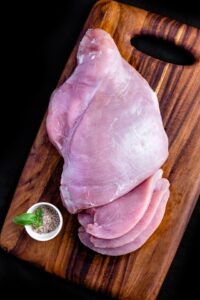
–Turkey: similar to chicken, turkey is a lean white meat that is carb free. It offers high protein and low-fat content.
–Pork: pork chops and the well marbled Boston butt are popular zero carb cuts. But stay away from pork products like bacon, bologna, ham, hot dogs and sausage because they are highly processed and are usually cured or brined with added sugar.
–Lamb and Mutton: lamb is considered a young sheep under 1 years old. Mutton is an older sheep which is older than 2-3 years old. Often described as gamey, lamb and mutton’s taste vary widely and heavily depends on the way the sheep was raised as well as how it is prepared while cooking.
–Wild Game: includes venison, rabbit, duck and quail, among others. Unless you are a hunter, it may be hard to find some of these meats in the store. But if you are lucky enough to get your hands on them, they can be an economical and carb free meal for you.
No Carb Food #2: Fish and Seafood
Fish and seafood are lean sources of high protein. They have considerably less fat content than meats, which makes them a more heart healthy option.
-Salmon
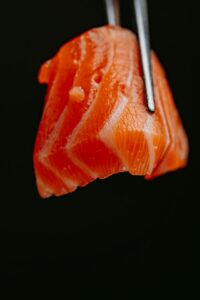
-Tilapia
-Tuna
-Catfish: these are probably the most commonly fried fish. But, similar to chicken, you should avoid frying these. This is so that you can avoid the flour and corn starch which is commonly used to dip the fish in before frying.
-Trout
-Sardines: stick to the sardines in either water or oil. The other varieties in tomato sauce or with veggies can add unwanted carbs which we want to avoid.
-Cod
-Halibut
-Herring
-Mackerel
-Snapper
-Whiting
-Bass
-Haddock
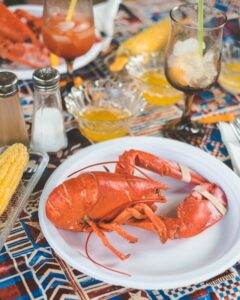
-Crab and Lobster: these are the only shellfish lucky enough to have no carbs. Steam them, boil them, or grill them. Just don’t add butter to them. Instead, add clarified butter which is also known as ghee, as a carb free alternative to mimic the savoriness of butter.
-Other Shellfish: shrimp, oysters and mussels are close to being zero carb, but don’t quite make the cut.
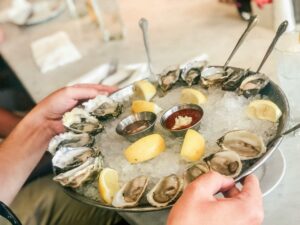
No Carb Food #3: Condiments
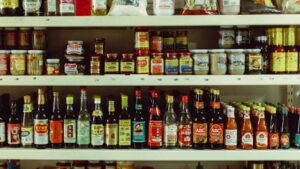
Condiments can really make a difference in the flavor profile of a meal. Unfortunately, many of the best ones have carbohydrates. Luckily, there is at least a small handful of condiments out there which are suitable for those watching their blood sugar.
–Vinegar: mix it with olive oil and salt for a zero-carb vinaigrette. Or just use it by itself as a dipping sauce.
-Mayonnaise: because it is normally used in sandwiches and other dishes that are not exactly carb free, it may be hard to find a good use of mayo in these conditions. Regardless, mayo is a carb free condiment that can be used if you can figure out a way to integrate it.
-Mustard: Yellow, Dijon and Spicy Brown mustards are usually carb free. Just make sure to avoid honey mustard varieties since the honey adds sugar to the mix.
-Hot Sauces: these are a versatile condiment that can help add some spice to your food. Louisiana, Cholula, Texas Pete, Valentina and Tabasco are some popular brands that have become staples on many people’s tables. Unfortunately, popular brand Sriracha is a no go since it has added sugar.
No Carb Food #4: Fats and Oils
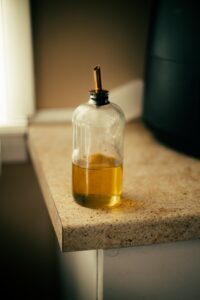
Although there are several uses for fats and oils in the kitchen, they are mostly used for frying. Although oven roasting and grilling are definitely healthier options, sometimes nothing beats a nice crispy fried food fresh out of the oil.
-Margarine: this imitation butter is composed of various vegetable oils, as opposed to milk fat like real butter.
-Clarified Butter (Ghee): this is similar to butter but has been put through a process which removes the milk solids.
-Olive Oil: widely considered the healthiest out of all of the cooking oils, it has many health benefits like neutralizing free radicals and fighting inflammation. The big drawback is that it’s not ideal for high heat cooking due to its low smoke point. This can cause early breakdown of the oil as it scorches in the pan and can leave you with a kitchen full of smoke very quickly.
-Vegetable Oil
-Canola Oil
-Coconut Oil
-Grapeseed Oil
-Palm Oil
-Lard
No Carb Food #5: Seasonings
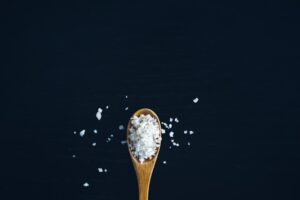
If you don’t want your food to be bland, seasoning is a must. Unfortunately, most seasonings have a trace amount of carbs and are not allowed if you are staying truly carb free. Therefore, we only have 2 ingredients to work with here.
-Salt: arguably the most used seasoning for foods, salt is a versatile ingredient to give almost any dish some much needed flavor.
-Mustard Powder: even though its not as useful as salt, mustard powder can also be used to season food without fear of spiking blood sugar.
No-Carb Food #6: Drinks
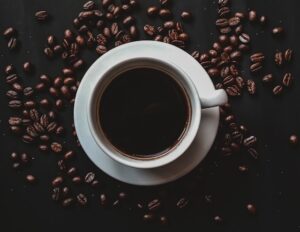
With drinks being in liquid form, it’s easy to inadvertently suck down a bunch of carbs if you don’t pay attention to the sugar content. When it comes to no carb drinks, keep it simple and enjoy the natural flavors of the coffee beans and tea leaves, etc.
–Water: it is important to drink plenty of water before a glucose test. Not only because water contains zero carbs, but also because it will help you to remain hydrated and improve vascularity. This will make it easier for the phlebotomist to find your vein when you go in to get the blood sample drawn.
–Coffee: Some people just cannot function without their daily dose of caffeine, so coffee is a non-negotiable for many people. Just make sure to skip the cream and sugar and stick to black coffee only.
–Tea: some people enjoy tea because of the light dose of caffeine that it provides compared to coffee. Others enjoy it for the health benefits like digestion and aiding with sleep. Some common varieties of tea that have zero carbs are black, green, peppermint, chamomile and hibiscus tea. Just be sure to not add things like milk, sugar or honey.
–Carbonated Water:seltzer water, club soda and sparkling water are all different names for this “spicy water”. Diet soda could technically fall under this category as well. However, tonic water is not the same thing due to it having added sugars, and should be avoided!
–Stevia: is a popular zero carb sweetener. If you absolutely have to sweeten a drink, this is the best option without using actual table sugar. Just don’t be too heavy handed, since it can be overly sweet even in very small amounts.
Foods You Should Avoid Before A Glucose Test
-Nuts & Seeds: even though nuts and seeds are primarily high protein and fat foods, they do contain a small amount of carbs.
-Dairy: It’s best to steer clear of dairy altogether when watching carbs. This is because virtually all dairy contains a sugar called lactose which can increase blood sugar levels. This goes for heavy cream, milk, butter and cheese. Even eggs are also a no go since they have a small amount of carbs as well.
-Fruits: many fruits are packed with a ton of sugar. Stay far away.
-Veggies: despite many of them being high in fiber, all veggies have some carbs in them.
-Grains: includes breads, pastas, rice, wheat, oats or barley to name a few.
-Potatoes: these are loaded with carbs. Which is why it’s no surprise that potatoes are one of the biggest go to foods when people are carb loading for sports and physical activity.
-Candy: most candies are pure sugar, so avoid them at all cost. Yes, even chocolate.
Final Tips Before Your Glucose Test
The recommended approach to prepare for a glucose test has always been to follow conventional guidance of 8-12 hours of complete fasting, with the exception of water and black coffee.
However, limiting your intake to carb free food and drink items like we listed above can accomplish the task of stabilizing blood sugar, but without completely starving.
Remember to check the nutrition fact labels on the package as well as usda.gov to verify that they truly have zero carbs. Also, consult your doctor of any dietary objectives you wish to pursue prior to the glucose test so that they can approve or deny the requested plan based on their clinical judgement. An erroneous glucose test can potentially impact both diagnosis and treatment, so you should follow all directions that your provider gives you.

